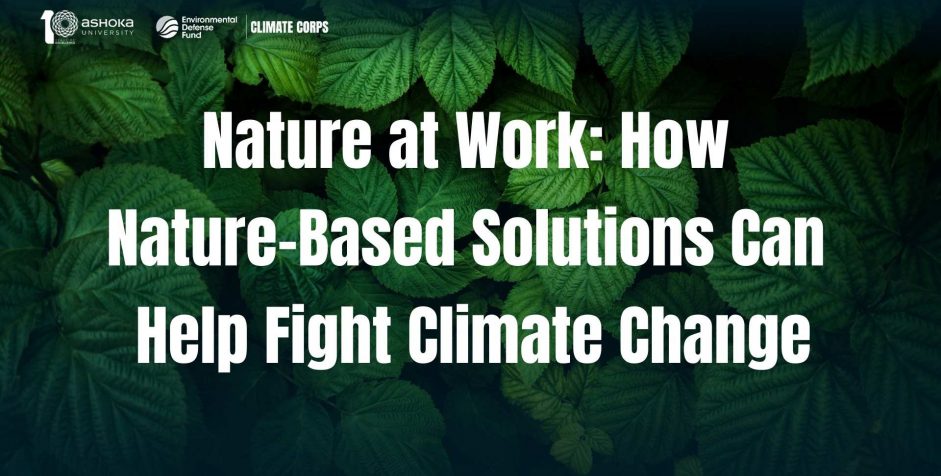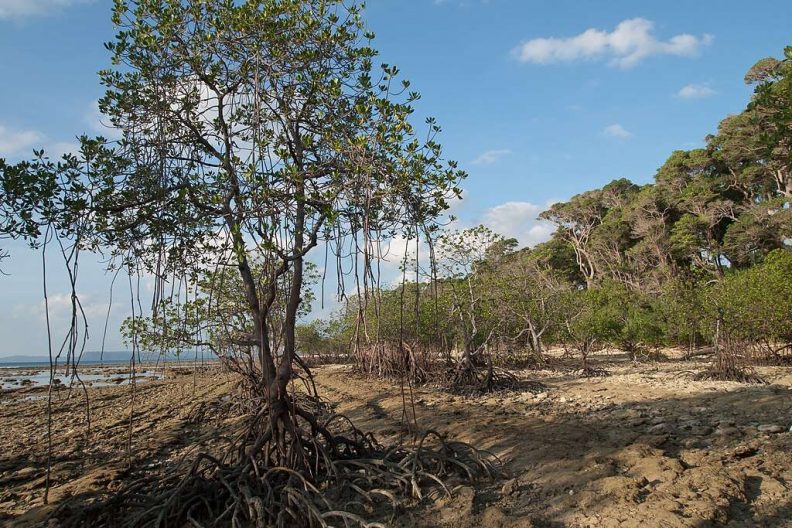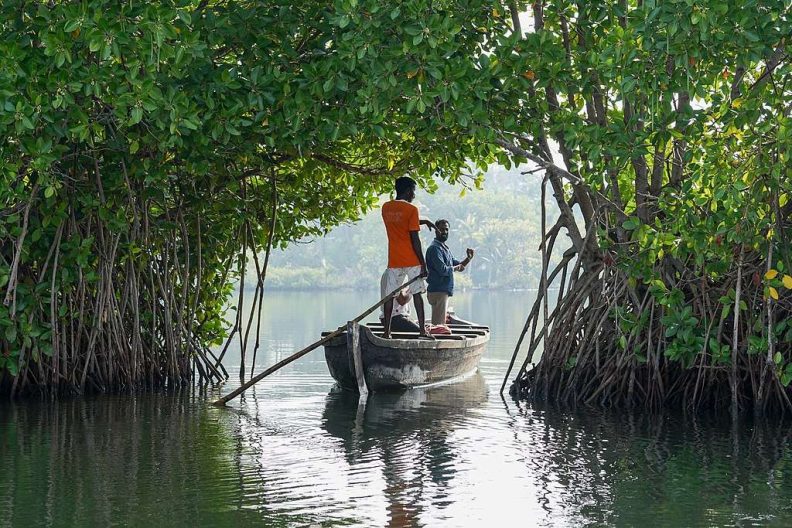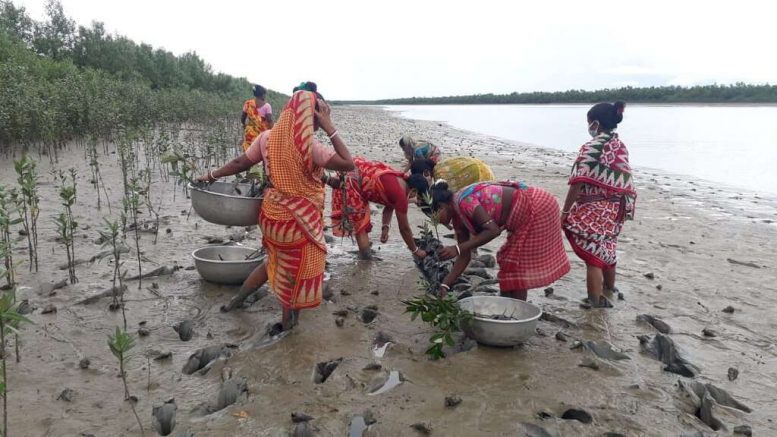Ashoka-Environmental Defense Fund Climate Corps Blogs
Nature at Work: How Nature-Based Solutions Can Help Fight Climate Change

India faces significant impacts from climate change, with rising sea levels and increased cyclonic activity threatening vital ecosystems like the Sundarbans mangroves, crucial for coastal protection and biodiversity. Now, imagine a world where our cities are enlivened with lush green canopies, where mangroves stand as sentinels against the rising fury of the oceans, and where wetlands transform from wastelands into water sanctuaries that clean and recharge our urban landscapes.
What if the solutions to some of our most pressing climate challenges lie not in vast technological complexities but in the very nature around us? This is the premise of nature-based solutions (NbS)—an approach that harnesses the power of natural processes to address societal challenges, enhance biodiversity, and improve human well-being.
What Are Nature-based Solutions?
NbS involves actions to protect, sustainably manage, and restore natural ecosystems. These actions tackle societal challenges such as climate change, human health, food and water security, and disaster risk reduction effectively and adaptively, while simultaneously providing benefits for human well-being and biodiversity.
Research shows that NbS can help cut up to 37% of the emissions needed to keep global warming below 2°C. They can also help communities better cope with climate change by reducing the damage caused by natural disasters.
At the core of this approach is a simple idea: nature, when protected or restored, can take care of itself—and us.
"The foundation of NbS lies in the fact that nature itself has an inherent capacity to recover and return to a state where it can at least partly, if not completely, resume its function of providing the ecosystem services it once did," explains Dr. Sudipta Chatterjee, Associate Director of Programs at The Nature Conservancy.

Pic: Wikimedia Commons
These include interventions like mangrove restoration, afforestation, artificial wetlands to treat wastewater, restoring degraded coal mines, or contour trenching to recharge water tables—all tailored to the local ecosystem. The goal is always to work with nature, not against it.
Ever Imagined How NbS Works Against Climate Change?
Building on nature's innate resilience, consider a common problem of flooding in coastal areas due to storm surges and coastal erosion. While traditional approaches often rely on man-made structures like sea walls or dikes (man-made grey infrastructure), nature-based strategies offer a sustainable alternative.
For example, planting mangroves along coastlines not only mitigates the impact of storms on communities and economies but also enriches biodiversity, providing crucial habitats for various marine and bird species.

Pic: Wikimedia Commons
Radhika Rao, a Research Associate at the World Resource Institute's (WRI) Global Restoration Initiative, provides another example from Mumbai, India. She explains how the state government’s initiative to create a 3.2-acre urban forest can not only help address urban heat island effects, with the potential to cool temperatures in the area by up to 3 degrees Celsius (5.4 degrees Fahrenheit), but will also provide recreational spaces for local communities.
In Burundi, terraces of trees and fodder crops intended to control soil erosion on steep hillsides also build resilience to landslides, sequester carbon, and help increase agricultural productivity.
"NbS, which have always been around, are very cost-effective. They aren't deteriorating systems; they are achievable. We use nature's resources to help restore systems," adds Dr. Chatterjee.
Translating Nature-Based Solutions into Practice
Forests absorb nearly one-third of global carbon emissions—about 2.6 billion tonnes each year. In 2021, India’s forest cover was 8,09,537 square kilometres, or 24.62% of the country’s total area. To strengthen its carbon sink, India has pledged to increase this to 33% by 2030 through afforestation (planting trees in non-forested areas) and reforestation (restoring degraded forests).
India’s 7,500-kilometre-long coastline is also highly vulnerable to climate impacts. Between 1990 and 2018, around 33.6% of the coastline experienced erosion, affecting about 14% of the population living in coastal districts. NbS offers an alternative to hard infrastructure. For example, in Gujarat’s Jambusar taluka, local communities have built a coastal bioshield—planting mangroves along the shore, salt-tolerant trees behind them, and fodder plants closer to the village—creating a natural barrier that also supports local livelihoods.
Rooted in the Community: The Human Element of Nature-Based Solutions
From reforestation in terrestrial environments to the creation of artificial wetlands in aquatic systems, the success of these initiatives often hinges on one critical factor: community involvement.
The involvement of local communities is not just beneficial but essential. Dr. Chatterjee shares his experience with the Neora Valley Wildlife Sanctuary restoration, highlighting the indispensable role of local support: "Communities are extremely important. All of us involved in restoration projects hinge on the support of local communities. Without their support, these efforts would not succeed." He recounts the challenge of removing invasive species, a task that required intense community engagement and cooperation to manage and ultimately facilitate successful afforestation.

Pic: Wikimedia Commons
"For NbS to make an impact, I believe it has to be locally led," says Radhika Rao. "That means communities should be at the center—making decisions, participating actively, and having their voices heard through institutionalized mechanisms, such as grievance procedures."
She also stresses that the solutions should be localized. NbS have to be carefully tailored to the local context, the specific ecosystem services needed, and the native vegetation that should be planted. It cannot just be about planting trees—if they are not native species or are planted in the wrong places, they may end up doing more harm than good. We need to ensure that the intervention matches the requirements of the habitat. If a habitat requires shrubland, then shrubland must be protected or restored. "I think what made them effective was that they were locally led and suited to the local context—fit for purpose," she says.
Challenges and Opportunities in Implementing Nature-Based Solutions
Implementing NbS comes with its unique set of challenges and opportunities. As Dr. Komali Kantamaneni, Senior Research Fellow at the University of Central Lancashire, points out, there is no one-size-fits-all solution when it comes to ecosystem conservation involved in NbS. Strategies must be tailored to a region’s climate, ecosystem type, and socio-political realities.
For instance, in colder regions like the United Kingdom, certain NbS that work in tropical settings might not be applicable. This highlights the importance of understanding the specific ecological and climatic conditions of each area to design effective NbS.
She shares her experiences from the Philippines and Mauritius, where mangroves have proven effective in reducing the impact of natural disasters like tsunamis. "They can break down tsunami waves within a short period, which means they reduce the impact of natural disasters enormously," she notes.
Dr. Kantamaneni believes mangroves and other NbS remain among the most cost-effective tools for climate adaptation. “You don’t need massive budgets,” she says. “Even with minimal support and the right people on the ground, they work. They protect infrastructure, biodiversity, and communities.”
Looking ahead, promising opportunities for NbS in India lie in:
- Developing standardised, long-term monitoring mechanisms (beyond satellite images)
- Supporting indigenous ecological knowledge in restoration
- Exploring NbS in underrepresented regions like peri-urban zones
- Expanding financial incentives through green credits and carbon markets
Missed opportunities often stem from underestimating the need for post-implementation care and assuming ecological interventions will self-sustain. A growing body of work—including India’s REDD+ and CDM pilots—shows that where restoration is done in partnership with communities and backed by resources, it endures.
As NbS gains global recognition, India is well-positioned to lead with a locally rooted, people-centric model—blending scientific insight, traditional wisdom, and democratic participation. That, perhaps, is the most sustainable path forward.
Note: The views expressed in the quotes featured in this article are those of the individual interviewees and do not necessarily reflect the views of the Climate Corps program.
Article by Zoya Hussain

















